Finspan is a fishy treat, but may be too familiar for Wingspan fans
It started with birds, then it was dragons now we have Finspan. Get ready to dive into the latest addition to the Wingspan universe from Stonemaier games.
It started with birds, then it was dragons now we have Finspan. Get ready to dive into the latest addition to the Wingspan universe from Stonemaier games.
Finspan takes players beneath the waves and casts them as divers seeking to discover and observe the widest variety of aquatic life over four weeks (rounds). Just as in the previous games each of your marine species will give you specific benefits that grow the deeper you dive and the more species you are able to gather and observe. You will also be supervising the hatching of eggs into young which will gather into schools of fish. At the end of the game the player that earns the most points from played fish, eggs, young, schools and achievements will claim the victory.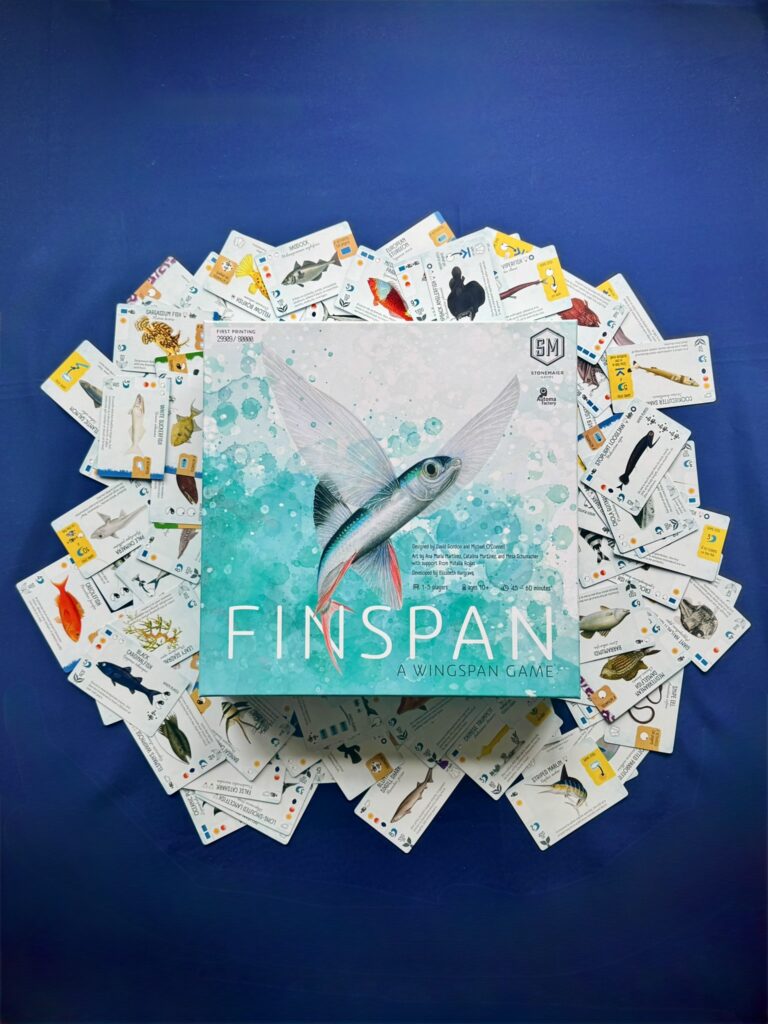
Players start the game with their own ocean board and two starter fish cards as well as three from the deck. Each round every player will have six actions tracked by the excellent little diver meeples. On their turn players will either play a fish card onto their ocean board or dive to observe their gathered species. The way cards are played in Finspan is one of the biggest departures from the other Spans. There are no food resources in Finspan instead the cost to play cards is usually discarding other cards from your hand or sometimes eggs or young, some cards also require other fish to be consumed by playing them on top of smaller fish, similar to tucking in Wingspan. Fish can be played into one of three distinct dive areas similar to the habitats of the other Span games. Each of these specialises in a different activity: drawing more fish cards, gaining eggs and hatching eggs. Each of the dive sites extends downwards into the ocean rather than horizontally and has three different depth zones: the sunlight zone near the surface, the midnight zone of the depths and the twilight zone between the two. The majority of fish cards can only be played in certain zones and some are restricted to specific dive sites. Fish cards have three types of abilities: those that activate when the card is played, yellow abilities that happen at the end of the game or brown abilities triggered by taking the dive action.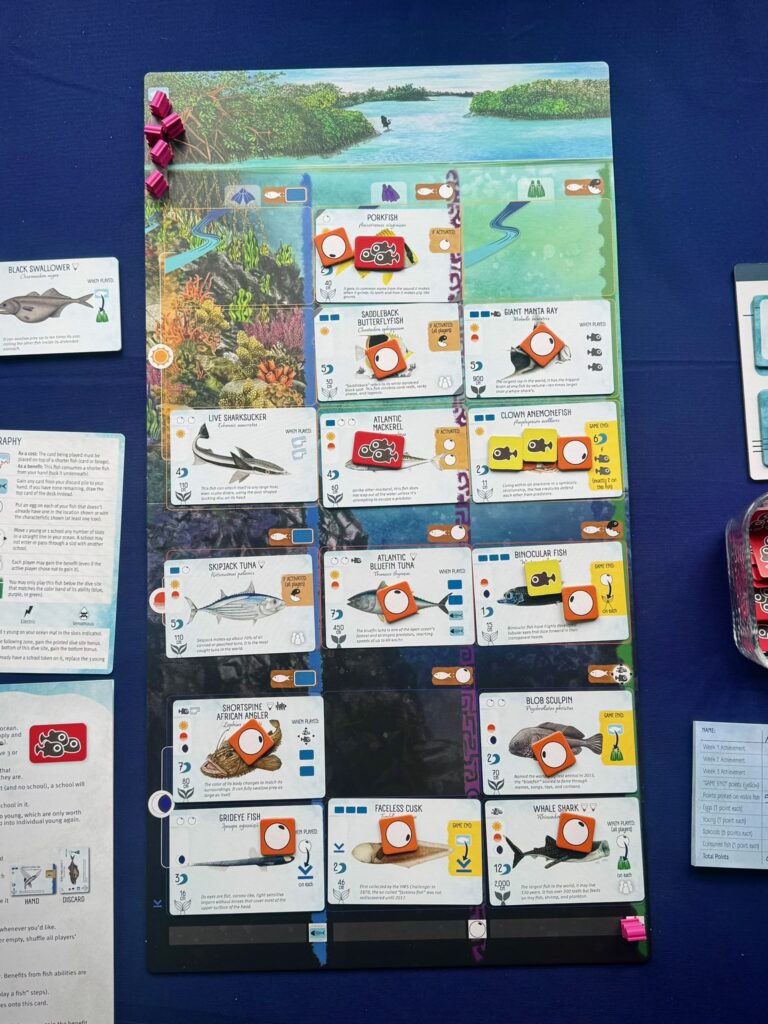
The dive action allows players to activate all of the brown abilities on fish in a chosen dive site, starting at the surface level and working down one at a time as well as taking the bonuses for that site. Fish abilities often let players do things such as lay additional eggs, draw a card from your discard pile or reorganise young on your fish cards. High scoring schools are formed when three young are on the same fish card.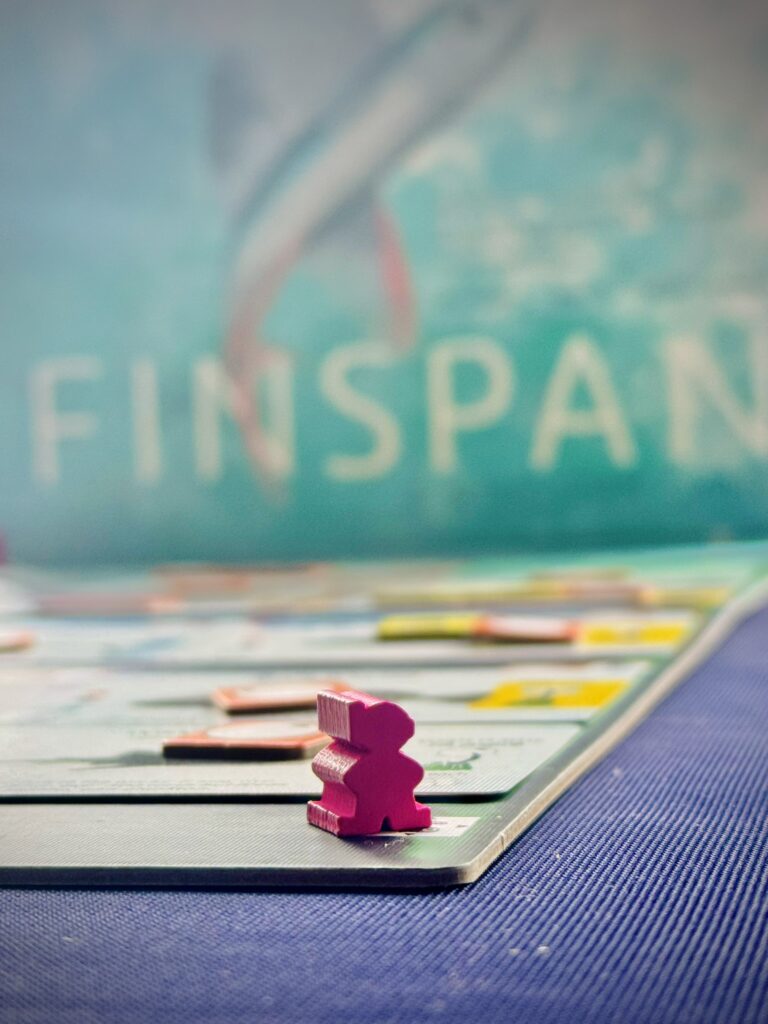
At the end of each game week after every player has used all of their diver meeples and thus taken six actions each all players score the week end achievement before a new round begins. Achievements could be things such as fish of a certain size or number of eggs and young. At the end of the fourth week there is no achievement scoring. Instead players proceed directly to final scoring.
As always with Stonemaier games production quality is great. Finspan comes in a little less than Wingspan or Wyrmspan cost wise as it does include a little less when it comes to components. The eggs, young and schools are cardboard tokens but these can be upgraded to wooden meeples and squishy eggs if you so desire for the deluxe experience. The rulebook is easy to follow and includes complete examples.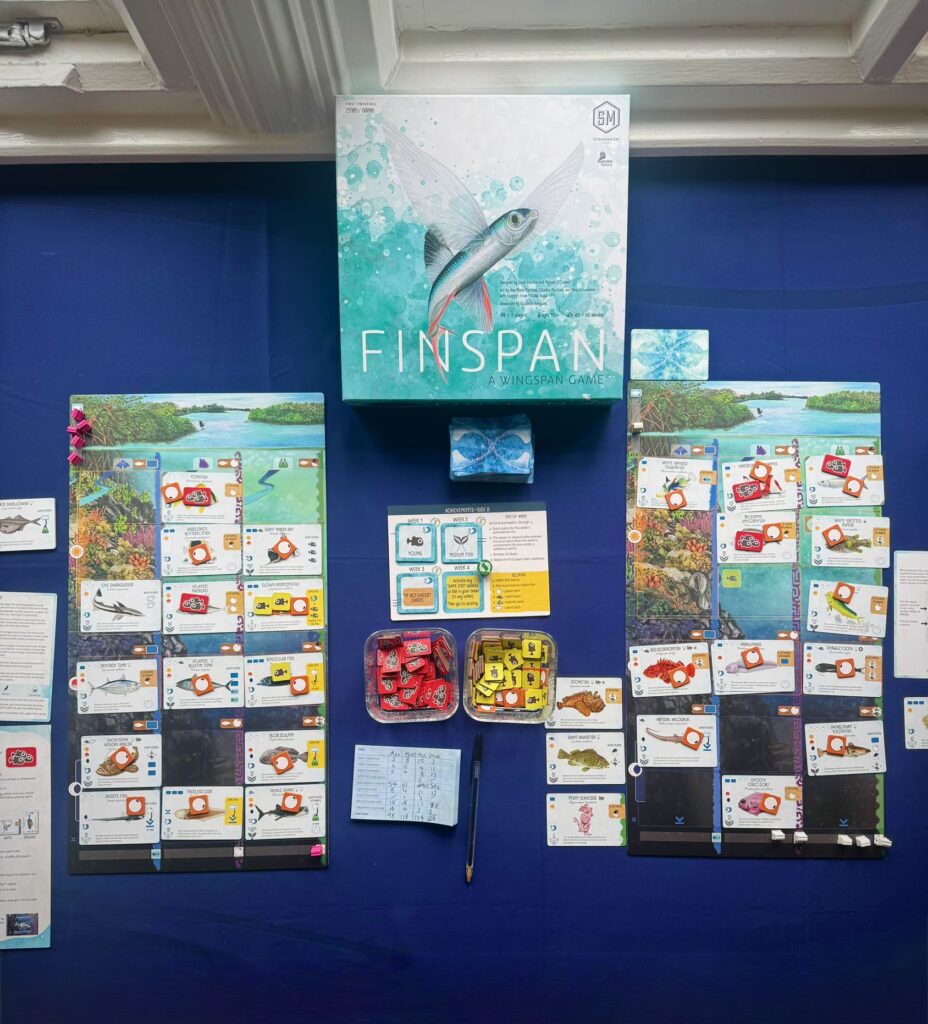
Complexity wise this addition to the Wingspan universe is a little more accessible, it’s easier to learn and quicker to play. Once you’ve got the hang of things it easily plays within an hour. Finspan does a good job of blending the familiar with new mechanics. Removing the food resources works particularly well as it streamlines the game but also adds new interest, as you inevitably face tough choices about what cards to sacrifice so you can play others forcing you to constantly evaluate which cards in your hand are most valuable. Couple this with the fact that the cards in your hand are on public display and a lot of fish abilities apply to all players and Finspan feels like a fresh new experience without wandering too far.
In Finspan each player has their own private discard pile and there is no draw display as in the other games. So the only way to control what you draw rather than take your chances with the top of the deck is to leverage the fish which allow you to draw any card from your own discard pile. This kept things interesting and the player interaction more friendly as it’s not possible to knowingly swipe the best card from under people’s noses. Often my strategy would revolve around cycling my own discard deck as much as possible, repeatedly discarding as fodder and then redrawing a high value card before finally playing it at end game.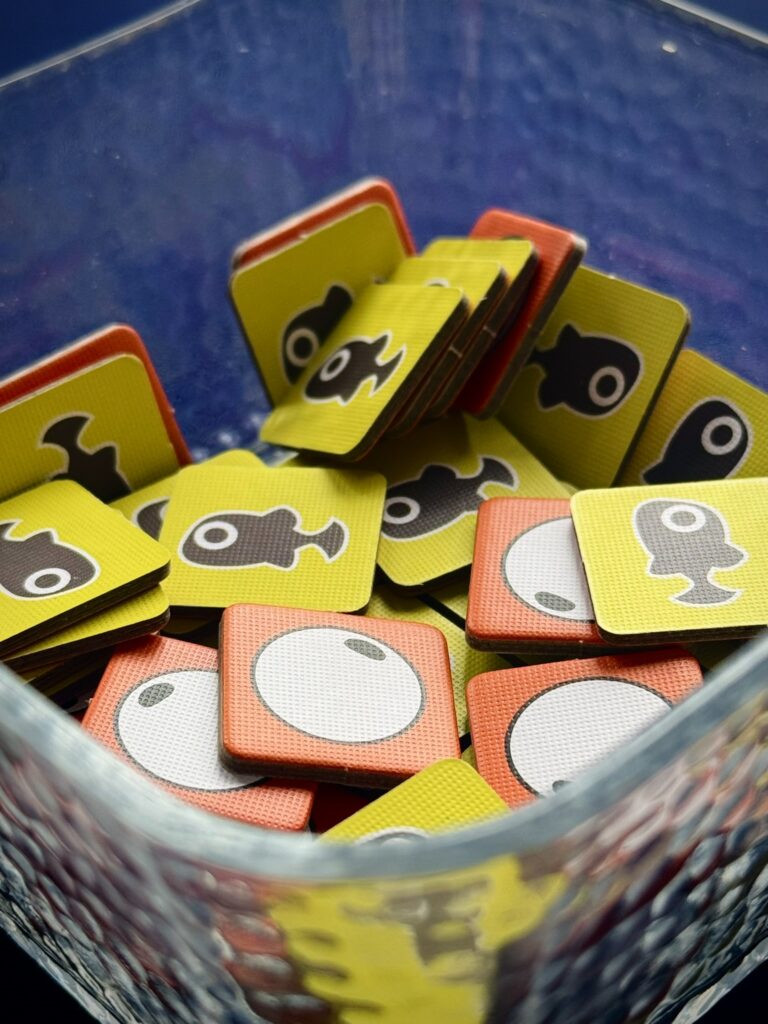
All in all Finspan offers a great experience for newcomers and veterans alike with its streamlined but strategic design. With its shorter playtime and quick teach I’ve enjoyed getting it to the table a lot. Despite the lack of colourful eggs it looks great on the table, the cards have a clean, crisp design and the player boards are nice and colourful. The player boards work top to bottom rather than the side to side to simulate the ocean depths which really helps sell the underwater theme. There’s lots of variability here with the size of the deck and selection of achievements while the rulebook teases us with the promise of an expansion, honestly I can’t wait. After that, what’s next for the Spaniverse? My money is on Bonespan. Bring on the dinos.
You can purchase Finspan on Amazon.
Comments are closed.